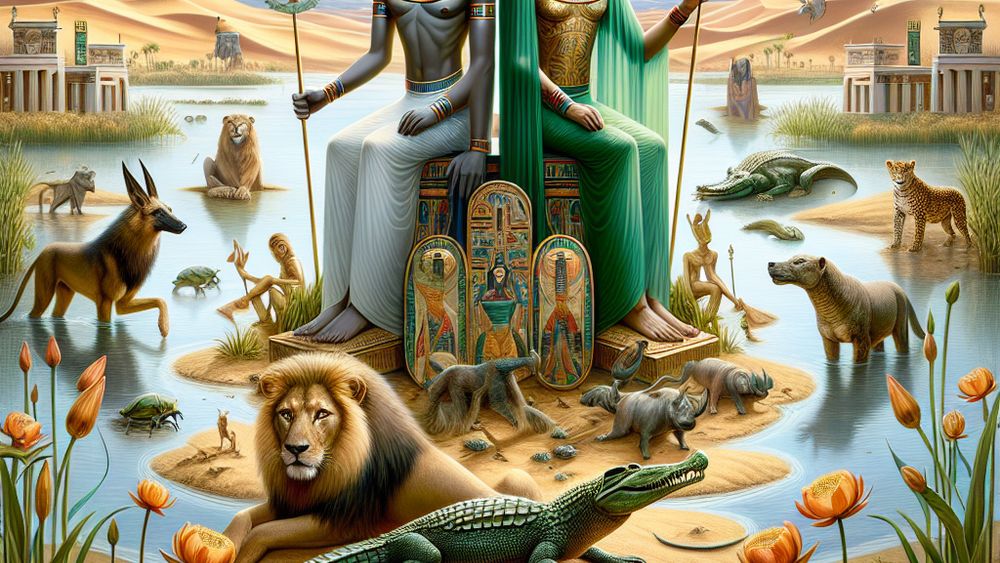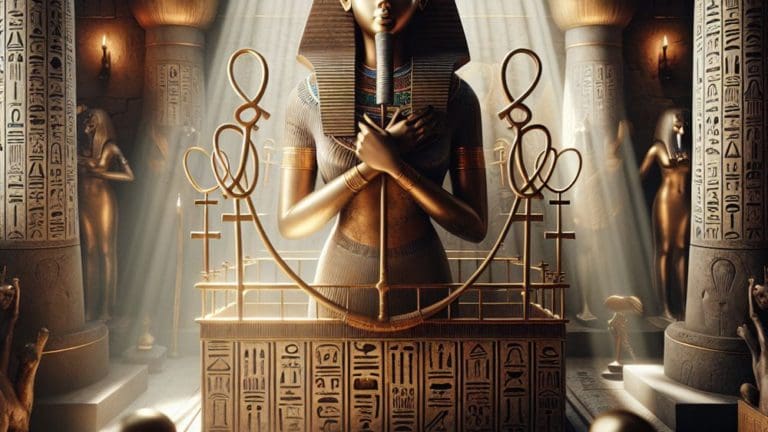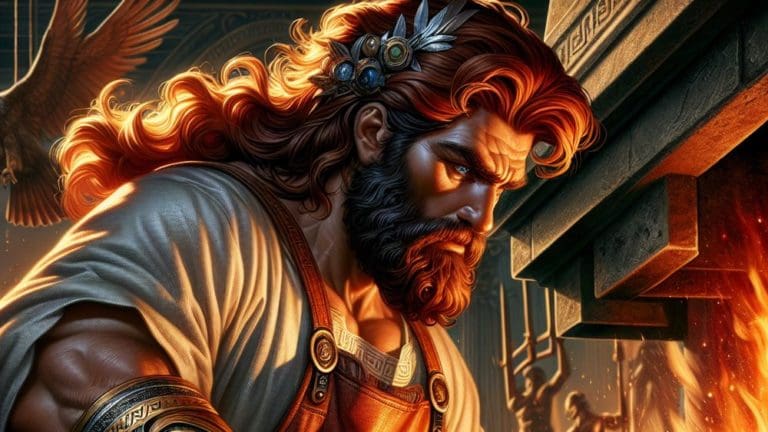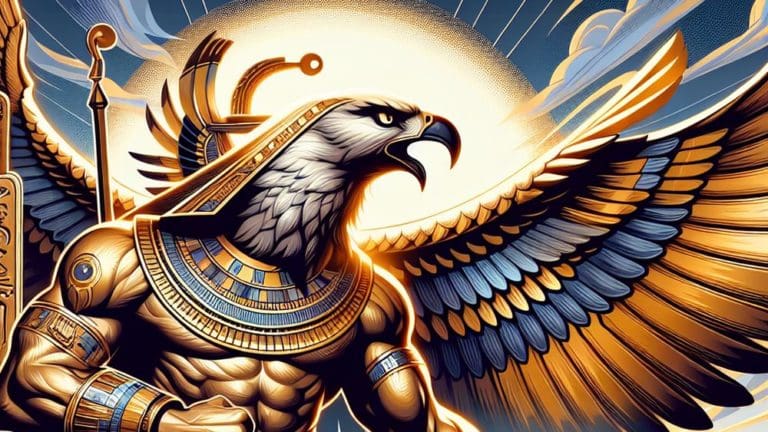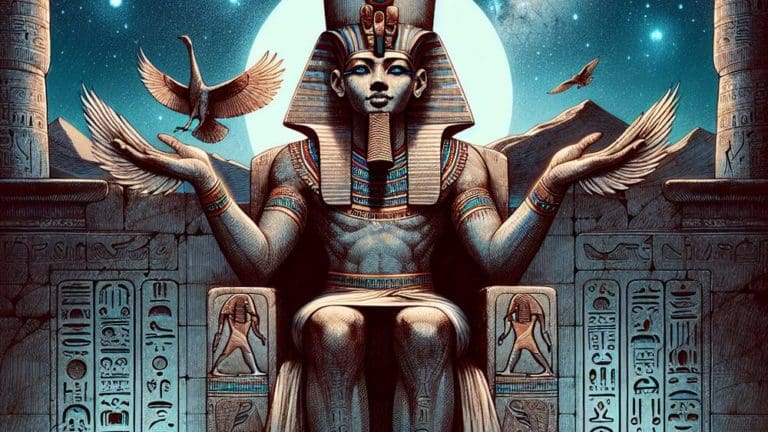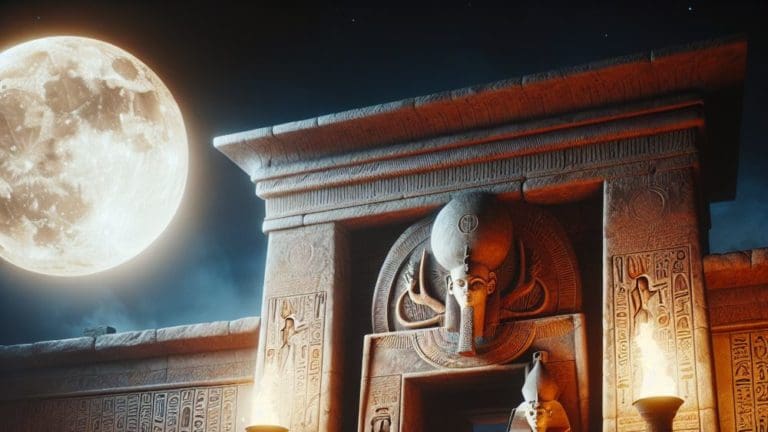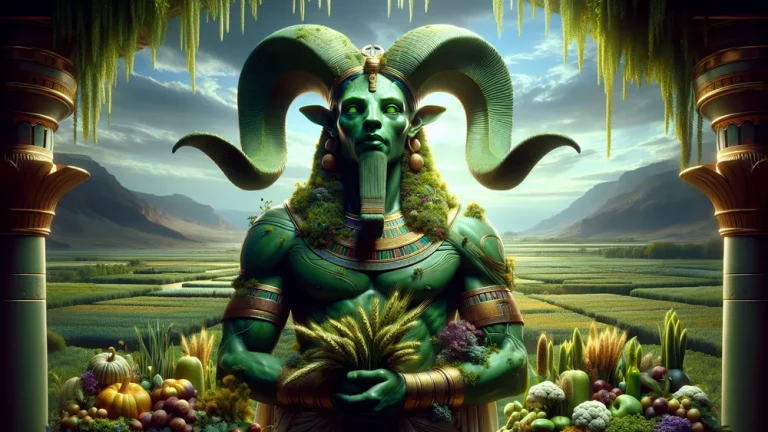Egyptian Gods And Animals: Sacred Creatures Of Ancient Egypt
Egyptian Gods And Animals: Sacred Creatures Of Ancient Egypt
Have you ever wondered about the fascinating relationship between egyptian gods and animals? This enchanting bond is not only a cornerstone of Egyptian mythology but also an intriguing subject that has captivated historians, travelers, and mythology enthusiasts around the globe. Delving into the ancient Egyptian civilization reveals a complex pantheon where deities often took the form of animals, reflecting their divine attributes and roles within the mythology. From the protective eye of Horus to the fertility symbolized by the cow-headed Hathor, every animal form carries with it an aura of mystique and profound symbolism.
Key Points:
- Egyptian gods often took the form of animals, reflecting divine attributes and roles.
- Animal forms in Egyptian mythology symbolized specific powers and aspects of life.
- Cats represented protection and agility as embodied by the goddess Bastet.
- Crocodiles, associated with Sobek, symbolized strength and power in Egyptian culture.
- Thoth, god of wisdom, was linked to the sacred ibis and baboon in Egyptian mythology.
- Animals were crucial in Egyptian mythology as they embodied gods’ characteristics and bridged human and divine worlds.
The Pantheon of Egyptian Deities and Their Animal Forms
In the realm of ancient Egypt, gods and goddesses frequently assumed animal forms, each embodying specific powers and aspects of life. This symbolic representation bridged the heavenly and the earthly, offering the Egyptian people a tangible connection to the divine.
The Significance of Animal Forms in Egyptian Mythology
Animal forms in Egyptian mythology symbolized the multifaceted nature of deities. Each animal depicted a specific attribute or power of a god, making the mythology a rich tapestry of interconnected symbols and meanings.

- Cats represented protection and agility, embodying the goddess Bastet.
- Jackals, often associated with Anubis, symbolized death and the afterlife, reflecting their role as protectors of graves.
- The falcon, linked to Horus, denoted kingship, the sky, and protection. These animal forms were not randomly chosen but were deeply entwined with the characteristics of each deity and what they represented to the ancient Egyptians.
The animal forms in Egyptian mythology symbolized specific attributes or powers of the gods, creating a rich tapestry of interconnected symbols and meanings.
Key Egyptian Gods and Their Associated Animals
The mysterious connection between gods and their animal counterparts illuminates the complex belief system of ancient Egypt. Below is a table showcasing several key deities and their associated animals, highlighting the intricate link between the divine and the natural world.
| God’s Name | Associated Animal Form | Symbolism |
|---|---|---|
| Horus | Falcon | Kingship, Sky, Protection |
| Anubis | Jackal | Death, Afterlife |
| Bastet | Cat | Protection, Agility |
| Sobek | Crocodile | Strength, Power of the Nile |
| Thoth | Ibis | Wisdom, Writing |
This table serves as a glimpse into the rich tapestry that is Egyptian mythology, revealing how ancient Egyptians viewed the world around them and the important role animals played in that vision.
Sacred Animals in Ancient Egyptian Culture
Sacred animals were revered in ancient Egyptian culture as emissaries of the gods, playing critical roles in religious rituals, daily life, and the eternal journey of the afterlife. From the domestic cats safeguarding homes to the majestic lions symbolizing the power of the Pharaoh, each animal held a sacred space in the hearts of the ancient Egyptians.
Cats: Divine Protectors of the Home and Family
In ancient Egypt, cats were revered as divine protectors of the home and family, embodying the spirit and grace of the goddess Bastet. With their poised demeanor and ferocious hunting skills, cats played a crucial role in controlling pests and protecting food stores from mice and rats.
Cats were so esteemed that harming one was considered a crime against the gods themselves. Families would mourn the loss of their feline protectors, often mummifying them just as they did their human loved ones. This deep bond between humans and cats is a testament to the spiritual and practical importance they held in Egyptian life.
- Bastet: Goddess of home, fertility, and childbirth; often depicted as a lioness or a woman with a cat’s head.
- Protection: Cats protected grain stores and homes from pests, embodying the protective nature of Bastet.
- Mummification: Reflecting their sacred status, cats were often mummified as a form of respect and mourning.
- Legal protection: Laws protected cats, highlighting their divine and societal importance.
Cats in ancient Egypt were revered as divine protectors and were highly valued for their role in controlling pests and safeguarding food supplies, with harming a cat being considered a crime against the gods.
Crocodiles: Feared and Revered
The ancient Egyptians had a complex relationship with crocodiles, viewing them with both reverence and fear. Sobek, the crocodile-god of strength and power, was believed to control the waters and fertility of the Nile, making him an essential deity in the Egyptian pantheon.
Crocodiles were revered for their power and seen as protectors, yet their presence was also a constant source of danger to those living near the Nile. This duality reflects the Egyptians’ understanding of nature as both life-giving and precarious. Temples dedicated to Sobek housed live crocodiles, treated as incarnations of the god himself.
- Sobek: God of water, fertility, and power; depicted as a crocodile or a man with a crocodile’s head.
- Ambivalence: Egyptians both worshipped and feared crocodiles, reflecting their potent and unpredictable nature.
- Cult centers: Places like Crocodilopolis were centers of Sobek’s worship, where crocodiles were kept and revered.
- Protection and danger: Crocodiles symbolized the protective and threatening aspects of Egyptian life.
The Sacred Ibis and Baboon: Wisdom and Writing
In the rich tapestry of Egyptian mythology, the sacred ibis and the baboon held places of honor, associated with Thoth, the god of wisdom and writing. The ibis, with its long, curved beak, was thought to represent the moon and the act of writing, its silhouette resembling the crescent moon and its beak a scribe’s pen.
Similarly, the baboon, known for its intelligence and social complexity, was seen as a symbol of learning and the sciences, often depicted alongside depictions of Thoth. Their presence in temples and tombs alike signifies the deep respect ancient Egyptians had for knowledge and the written word.
- Thoth: God of wisdom, writing, and science; often depicted with the head of an ibis or a baboon.
- Ibis: Symbolized the moon and was revered for its association with Thoth and the act of writing.
- Baboon: Represented intelligence and the social aspects of learning, closely linked to Thoth’s domain of knowledge.
- Symbolism in art: Both animals frequently appear in hieroglyphs and temple reliefs, illustrating their sacred status.
The sacred ibis and baboon symbolize wisdom, writing, and learning in Egyptian mythology, reflecting the deep reverence ancient Egyptians held for knowledge and the written word.
FAQs
1. Why were animals so important in Egyptian mythology?
Animals were crucial in Egyptian mythology because they embodied the characteristics of the gods, served as bridges between the human and divine worlds, and represented the power and protection the deities provided. Each animal linked to a god symbolized aspects of that deity’s role or abilities, making animals central to the understanding and worship of Egyptian gods.
2. How did Egyptians choose which animals were associated with gods?
The process of how Egyptians chose which animals were associated with gods is rooted in the characteristics and attributes that the animals displayed, which were then linked to the deities’ roles and powers in the mythology. This connection was deeply symbolic, reflecting the ancient Egyptians’ intricate understanding of their environment and the natural world around them.
3. Can you name a few animals that were considered sacred in ancient Egypt?
A few animals that were considered sacred in ancient Egypt include the cat, revered for its protection against vermin and evil spirits; the ibis, associated with Thoth, the god of wisdom and writing; and the jackal, linked to Anubis, the god of the afterlife. These animals were not just sacred; they were deeply intertwined with the Egyptians’ daily life and religious practices. [1]
4. How do modern interpretations of Egyptian gods and animals differ from ancient beliefs?
Modern interpretations of Egyptian gods and animals often differ from ancient beliefs due to variations in cultural contexts and the evolution of mythology over time. Contemporary views may romanticize or simplify these complex relationships, losing some of the intricate symbolism and significance that these animals held in the ancient Egyptian mindset and world. [2]
Conclusion
As we delve deep into the mysteries of the past, unraveling the profound connection between Egyptian gods and animals, we’re reminded of the wisdom and insights our ancestors held about the world around them. Their beliefs and practices reflect a rich tapestry of mythology and culture, where animals were not merely creatures of the earth but sacred beings that held divine significance, bridging the physical and spiritual realms.
In embracing these ancient wisdoms, let’s carry forward the respect and reverence for nature and the past, enriching our understanding of life’s intricate web. If you share a fascination for the sacred tales of egyptian gods and animals, I invite you to join me on this thrilling journey of exploration and discovery. Together, let’s keep the flame of curiosity alive, seeking answers and understanding within the whispers of history. Farewell, my fellow travelers of time, until our next adventure into the heart of the past. Warmest regards, Cedric.

